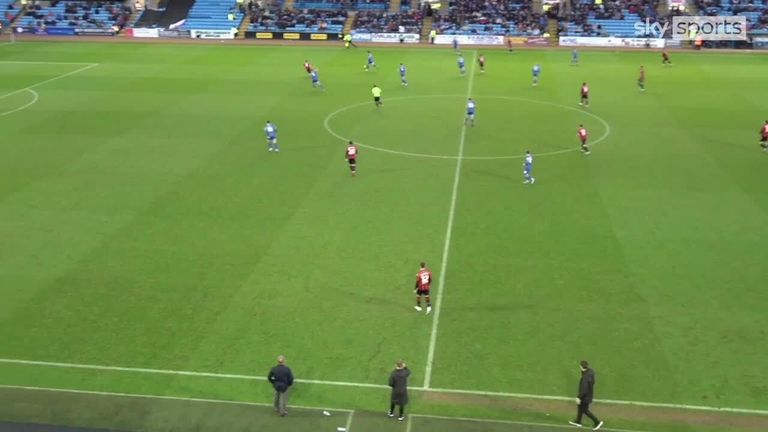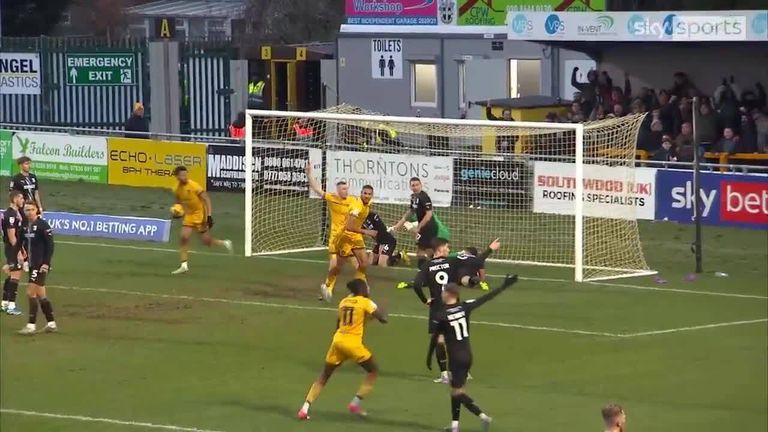[ad_1]
In Behind the Whistle, former Premier League and EFL referee Chris Foy goes through a selection of key match decisions from the latest Sky Bet Championship, League One and League Two action.
Behind the Whistle aims to give supporters of EFL clubs an insight into the decision-making considerations and also clarification of certain calls to provide an understanding of how the laws of the game are interpreted.
As part of a regular feature on Sky Sports following the conclusion of a matchday, Foy will be here to run you through some refereeing matters in the EFL…
Coventry City 3-1 Leicester City
Incident: Potential red card – Serious foul play (Leicester City)
Decision: Red card awarded (Leicester City)
Foy says: For a red card to be awarded for serious foul play, the tackle must clearly endanger the safety of an opponent or use excessive force. The Leicester player commits to a challenge that has both high speed and high intensity, and therefore clearly endangers the safety of the opponent. The decision was correct to show the red card.
Whilst there is a relatively low point of contact, in real time the speed, force and intensity with which the player makes the challenge meets the threshold for a red card for serious foul play.
Huddersfield Town 1-1 Plymouth Argyle
Incident: Goal scored – potential foul in the build-up (Huddersfield Town)
Decision: Goal awarded (Huddersfield Town)
Foy says: I think the better course of action would have been to award a free-kick to Plymouth Argyle in this passage of play. In my view, the defending player shields the ball well in an attempt to let the ball roll past him, and the Huddersfield Town attacker makes a challenge that doesn’t play the ball, and makes careless contact which trips the Plymouth Argyle defender.
Carlisle United 1-3 Oxford United
Incident: Goal scored – potential offside (Oxford United)
Decision: Goal awarded (Oxford United)
Foy says: The positioning of the assistant referee couldn’t be better for making this particular decision and the correct call has been made to allow play to continue which leads to an Oxford United goal.
The attacking player has timed his run really well and from the replays, you can see that the second-last defender and the attacker are all in line. It’s an excellent judgement to keep the flag down, resulting in a goal.
Northampton Town 1-1 Wigan Athletic
Incident: Potential penalty (Northampton Town) & red card (Wigan Athletic)
Decision: Penalty awarded (Northampton Town) & yellow card (Wigan Athletic)
Foy says: I don’t think there can be too many complaints in this incident. Once the goalkeeper is committed to a challenge, does not play the ball and makes clear contact with the attacking player, a penalty is the expected outcome, which happened on this occasion.
It was also the correct call to only caution the goalkeeper for denial of an obvious goal-scoring opportunity, given it was a genuine attempt to challenge for the ball.
Sutton United 2-2 Barrow
Incident: Potential goal scored (Sutton)
Decision: Goal awarded – ball crossed the line (Sutton)
Foy says: Without the use of goalline technology, it is sometimes difficult to say with certainty that the ball has crossed the line when the six-yard box has as many players in there as it does in this clip.
However, the assistant referee is optimally placed and has judged this correctly. From the angles we’re watching, you can clearly see that when Sutton’s No 33 is attempting to challenge for the ball, there is distance between the ball and the goal line. The ball is behind the line, so the correct decision was to award the goal.
[ad_2]
Source link




